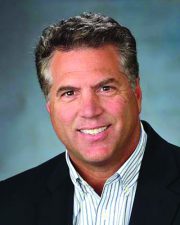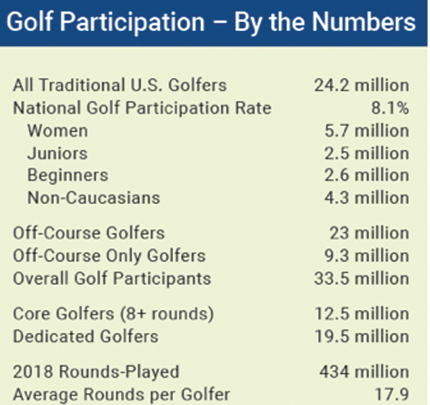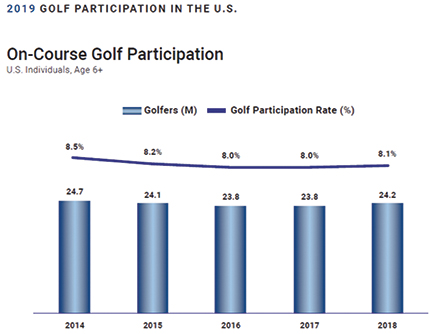
Wellspeak Dugas & Kane
According to the 2019 participation report by the National Golf Foundation, the golf industry has remained steady at around 8% of the US population, after a slight uptick in the number of golfers going from 23.8 million in 2017 to 24.2 million in 2018. This was the first measurable increase in the past 14 years. The average golfer is a 46 year old male with a household income of more than $100,000 a year and who plays about 18 times per year. This chart breaks down participation by market segment, on course vs off course and total rounds played. Golf participation varies by region of the country, from a high of 10.2% in the west north-central to a low of 6.3% in the southeast, to 8.3% in New England. Participation also varies by age and income, those people between 30-39 make up 19% of the playing population, while those higher earners ($125k>) account for 30%. College grads also play more golf, making up 58% of those individuals that play golf. Those people between 46 and 65 are most vital to the game; they make up the most golfers, rounds played and money spent on the game, more than $9 billion annually. Males make up 12.4% while females account for only 3.7%. Baby boomers, or those 65 and older played an average of 36 rounds a year, while young adults (18-34) only played 11.6 rounds a year.

We have seen another drop in rounds played. In the Northeast, 2018 was known as a bad weather year, most courses we surveyed were down by 10%, while nationally rounds were off by 4.8%, as shown above.

On a positive side, there was an increase in the average sales price, according to the Leisure Investment division of Marcus & Millichap, who reports the average price in 2018 was $3.7 million, from 107 national transactions, as compared to $3.1 million in 2017 from 114 sales. Their reporting shows that in 2006 the average golf course sold for $7.3 million, but dropped to a low of $2.7 million in 2012. A trend in technology has been growing, or that of golf simulators.

We have consulted on many clubs that have added this off-season revenue source. They can pay for themselves in no time and can boost food & beverage sales as well. Other advancements, the motorized GolfBoard, have been introduced to stimulate participation and attract more young people to the game.
I personally like the golf bike, as it combines physical activity and speeds up the time it takes to play a round.
Jeffrey Dugas, MAI, SGA, is a partner in the firm of Wellspeak Dugas & Kane, LLC, and heads the golf advisory group, Cheshire, Conn.








